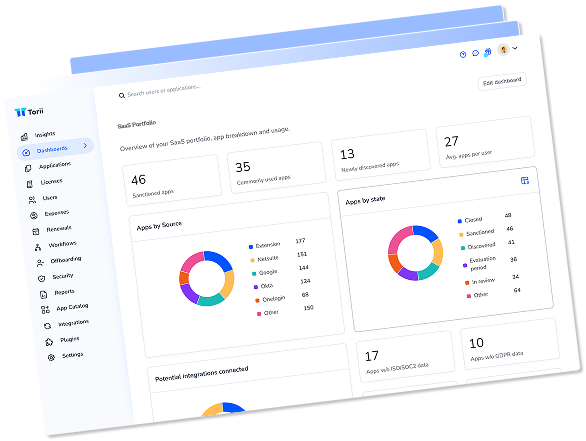IT’s last fortress isn’t a server room; it’s the orchestration layer. In an era where business teams adopt and even build their own applications, gatekeeping is an impossible game of whack-a-mole. IT, sysadmin, ops, their real power comes from democratizing the essential work of streamlining and managing these tools across the organization. Fighting for company-wide alignment.
Alex and the Very Bad Day
Once upon a time, Alex was the undisputed ruler of her SaaS kingdom. A master sysadmin, operations guru, and policy architect rolled into one, she had a playbook for every scenario, complete with war stories to match.

One afternoon, while sipping her daily Americano, a message buzzed on her phone:
“Did you know Sales is already using that tool… without IT review?”
Alex stared at the screen. Under her nose, the Sales team had built and launched their own software, so neatly tailored it put every vendor demo to shame. Procurement hadn’t even caught wind of it.
It’s the same story playing out across IT, Operations, and Procurement teams worldwide. Central approval has given way to business-led innovation, and the old fortress model simply can’t keep pace. Today, over half of the apps in organization’s stacks are shadow IT.
Panic and pride bubbled up in her chest like an overclocked CPU. “How could this happen?” she muttered. As she returned to the office, Alex wrestled with feelings of frustration and fear. One moment, outraged that someone had sidestepped a process built with a purpose. The next moment, she wondered if this was a warning sign that her job was in jeopardy.
Gartner calls this trend Business-led IT delivery, and recent findings show:
- 26% of business-area staff dedicate time to technology.
- 73% of non-IT managers want technologists on their own teams.
- 67% of CEOs want tech work done in the business, not just in IT.
Back at the office, Alex replayed the rollout in her mind. A quick check with her supervisor confirmed it: the CRO had signed off. Worse yet, nobody seemed to see the problem.

“They have no idea how to integrate this technology into our processes. No legal review, no RFI paper trail, no security review. This is a disaster waiting to happen!” Alex thought, her fingers flying across the keyboard as she punched out and deleted a flurry of strongly worded emails.
Alex is 100% correct. Business-led IT delivery can introduce serious risk, including:
- Weak governance, with no clear ownership or escalation path
- Fragmented user experiences, as each team reinvents the wheel
- Ballooning costs, in both time and budget overruns
- Compliance and security gaps, from missing audits to unchecked vulnerabilities
- Key-person dependencies, driving frustrated experts out the door
Pausing, Alex realized she was standing at a crossroads. A critical inflection point that would impact the future of her work in the company. Alex saw four paths forward:
- Fight it. Double down on approvals, block every unsanctioned rollout, and make shadow IT nearly impossible. But with the CRO championing speed, she’d become the bottleneck to revenue.
- Flee it. Jump to a role where every checkbox and policy draft is celebrated. Yet she loved her team, the problem-solving rush, and, let’s be honest, the unlimited company coffee.
- Ignore it. Pretend the rogue tool doesn’t exist and hope it blows over, but this was impossible for a high achiever like Alex. Plus, she had a suspicion that this wouldn’t simply blow over.
- Embrace it (strategically). Maybe this was actually an opportunity in disguise.
Ultimately, Alex chose to embrace the change whilst pulling together a proposal for how to enable business-led IT delivery in a smart way. By encouraging the democratization of digital delivery, Alex found a route to improve her company’s ability to adopt and build new and exciting technologies while protecting it from downside risks.
Gartner warns, “As digital solutions are increasingly developed by non-IT staff, IT leaders must be able to navigate and enable these initiatives by making fundamental changes in how their IT teams perceive and support business-led IT.” Their research shows that 79% of CIOs and technology executives report business-led IT as successful, and 80% of non-IT CxOs believe digital leadership is part of their job.
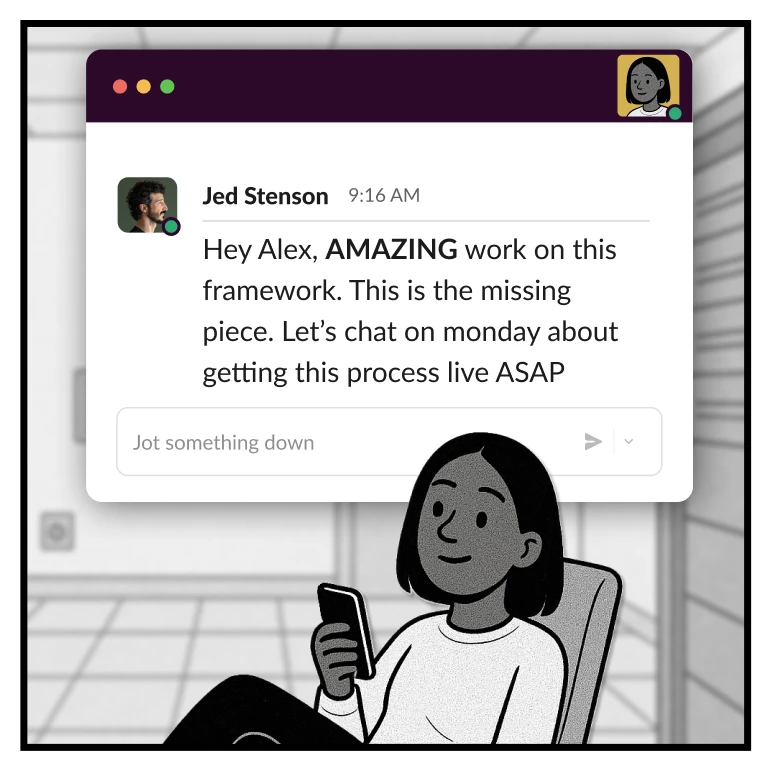
Alex’s story could easily be yours. With business-led innovation reshaping the landscape, IT can no longer afford to stay on the sidelines. To preserve and extend your influence, you must step in and establish a clear, repeatable framework that guides self-service projects from sandbox prototypes to enterprise-wide rollout. Below is a six-step orchestration strategy designed to help your team turn every spontaneous app build into a governed, high-impact initiative.
How to Build a Plan for Business-Led Innovation
Just like Alex, technical leaders around the world are navigating the complex landscape of shadow IT, rapid AI adoption, and low-code and no-code tools that are disrupting the traditional app adoption process. Their key to survival lies in their ability to drive smart innovation in a sustainable way. Gartner advises a six-step orchestration strategy for IT to lead this effort, rather than being swept up in it and risk their company falling prey to the many pitfalls that exist.
Six-Step Orchestration Strategy
1. Prepare IT Staff to Shift Roles
- Move from gatekeepers to orchestrators.
- Train IT to support app owners, power users, and AI explorers.
- Hold workshops on spotting risks in shadow SaaS and shadow AI.
2. Foster Communities of Practice
- Create cross-functional spaces for:
- App owners to swap tips
- Power users to share workflows
- IT to clarify standards
- Highlight wins where business-led tech saved money or time.
3. Empower with Platforms & Visibility
- Provide tools to:
- Manage SaaS licenses and usage
- Monitor integrations and AI usage
- Give app owners tools to monitor and manage their apps
- Offer self-service portals that allow teams to safely explore tools without hiding them from IT.
4. Simplify Support & Education
- Publish guides on common questions like:
- Procurement steps
- Security red lines
- Run quick trainings for app owners:
- Data privacy basics
- AI usage rules
- Vendor management tips
5. Set Governance Without Killing Speed
- Classify tools:
- Greenlight: safe, pre-vetted apps
- Yellowlight: business-led with IT oversight
- Redlight: prohibited tech (e.g. risky AI tools)
- Automate policies:
- Single sign-on enforcement
- Alerts for unsanctioned SaaS or AI use
6. Measure Business Impact
- Track:
- Shadow IT/AI discovered vs. brought under control
- License optimization savings
- Time-to-solution
- Time savings on manual tasks
- Report how democratized tech is fueling real outcomes.
The Big Idea
Democratization doesn’t mean chaos; it means giving teams the freedom to operate under clear guardrails. IT’s new superpower is helping the business innovate without putting the company at risk.
Going Deeper: How Torii Can Help
At Torii, we believe that SaaS Management is the key to thoughtful, democratized digital delivery. We provide a suite of features designed to give you oversight, track activities, monitor usage, spot anomalies, and empower users, all from one central AI-powered platform.
Task Manager Hub
At the heart of Torii’s orchestration framework is the Task Manager Hub, a built-in collaboration layer that brings accountability and clarity to SaaS management work. By automatically generating tasks (approvals, applications, or contract form fills) at defined workflow stages, it ensures the right person takes the right action at the right time.
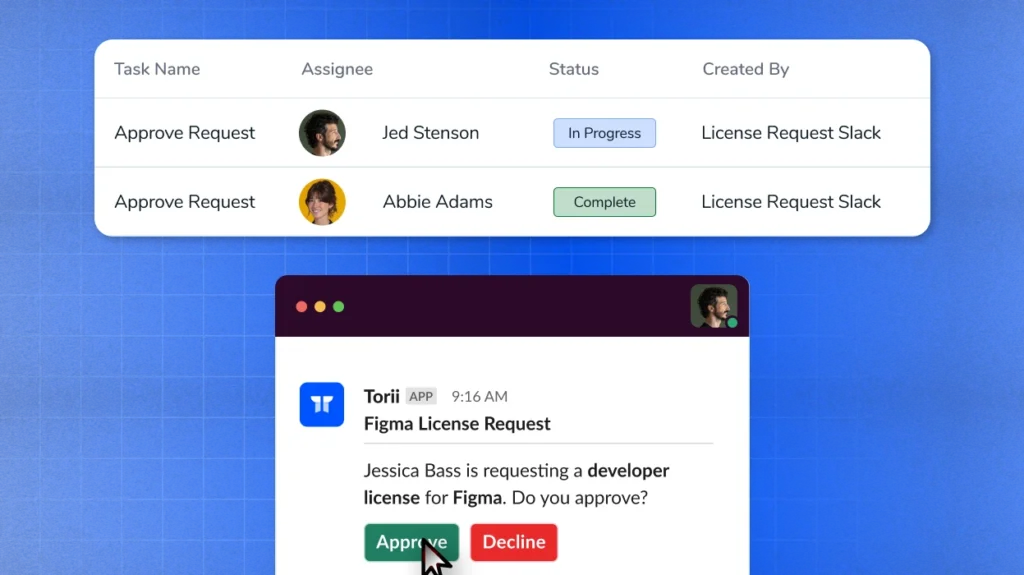
Assignees receive contextual prompts, complete with custom instructions and one-click buttons, directly in Slack or email, keeping teams moving without forcing them into another system. As workflows pause for human input and resume only once tasks are completed, Task Hub delivers accountability, traceability, and seamless coordination, transforming shadow IT sparks into governed, high-velocity processes. Learn more about the Task Manager Hub.
App Ownership
In Torii, every application is paired with a dedicated owner, an empowered business technologist who takes the reins on usage, costs, and contracts. Rather than relegating ownership to IT alone, Torii surfaces a holistic, app-centric dashboard the moment an owner logs in: usage trends, license spend, renewal dates, and key contacts all in one place.
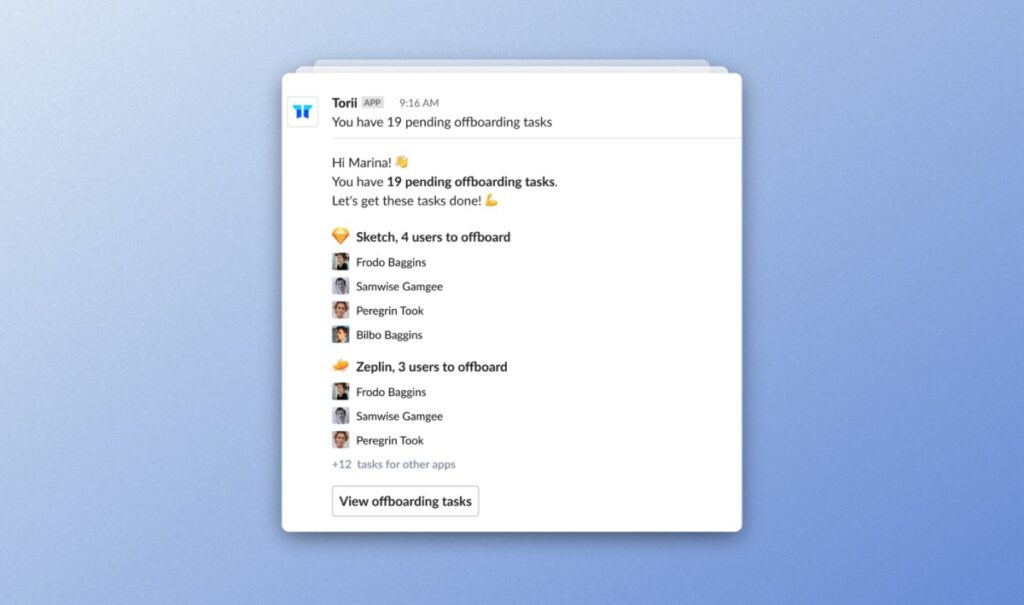
This shifts accountability to the people who know the tool best, reduces orphaned licenses, and ensures that IT’s governance framework amplifies rather than obstructs day-to-day management. By leading with the app owner’s view, Task Hub becomes a collaborative cockpit, not just “another ticket queue.” Learn more about application owner roles in Torii.
Visibility for Governance (Not Gatekeeping)
True orchestration demands transparency, not barricades. Torii’s unified visibility gives IT and business leaders a live map of every application in the company.
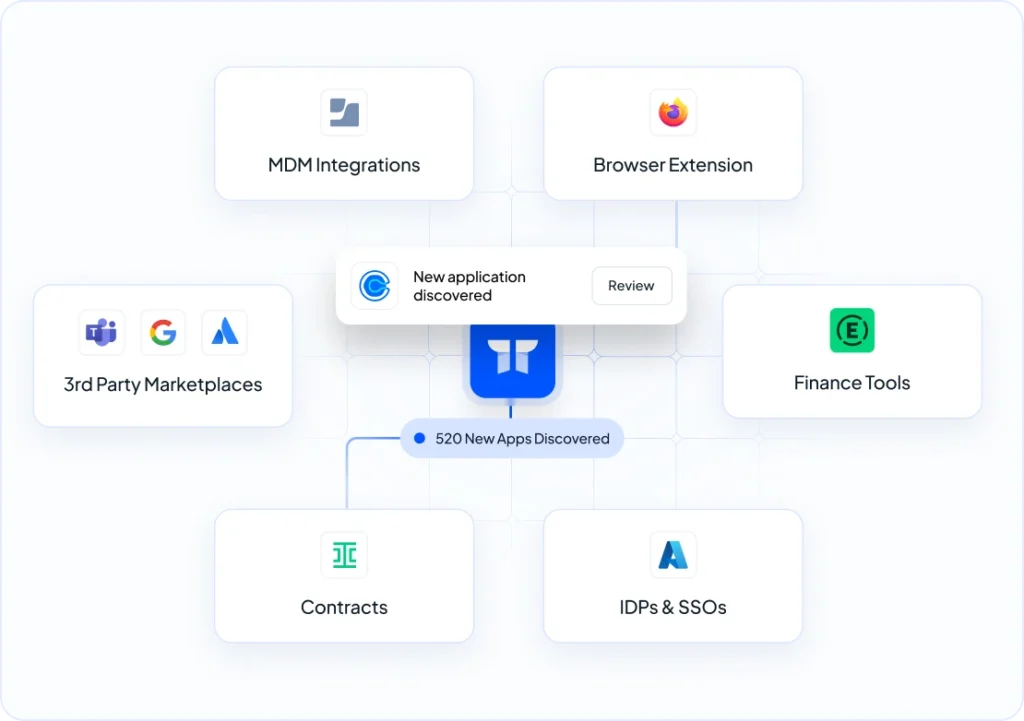
Best-in-class app discovery, customizable dashboards, Eko (enabling you to chat with your data using natural language), and real-time automated alerts enable you to identify compliance gaps, usage anomalies, or orphaned apps before they escalate into risk or excessive costs. Rather than policing every click, you’re enabling every team to move swiftly within guardrails you define, turning shadow IT into a predictable, governable class of tools.
With these three pillars in place, the Task Manager Hub keeps workflows on track, App Ownership anchors accountability at the right level, and Visibility for Governance strikes a balance between freedom and control. Torii equips organizations to embrace business-led IT at scale.

